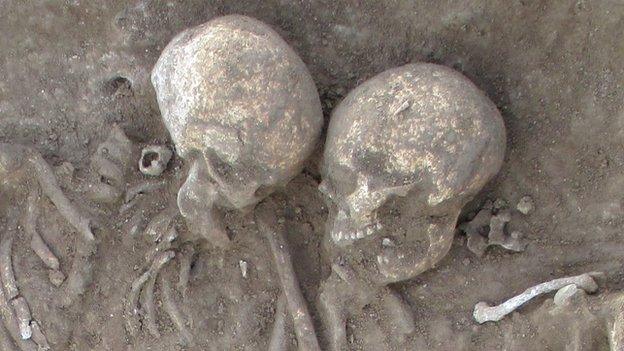Great Ryburgh dig finds 81 'rare' Anglo-Saxon coffins
- Published
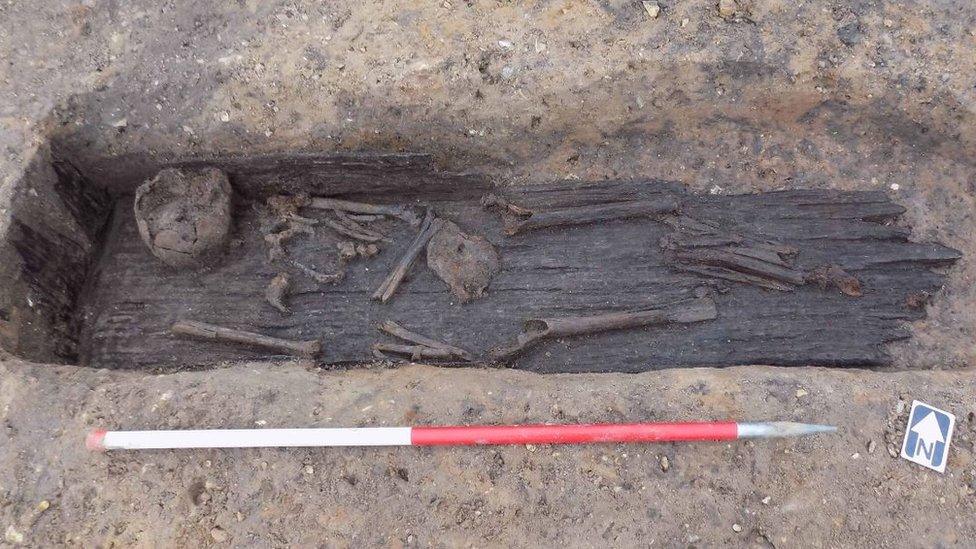
Historic England believes the finds will "advance our understanding of Middle-Saxon religious beliefs"
Archaeologists have discovered 81 "extremely rare" tree-trunk coffins at a "previously unknown" early Christian Anglo-Saxon community's cemetery.
Found at Great Ryburgh in Norfolk, their "remarkable preservation" was due to the waterlogged conditions of the river valley.
The Historic England excavation was carried out ahead of the construction of a lake and flood defence system.
Chief executive Duncan Wilson said the graves were "a significant discovery".
Ben Ando speaks to Will Fletcher from Historic England about the discovery of the coffins
Anglo-Saxon coffins seldom survive because wood decays over time.
James Fairclough, the lead archaeologist from the Museum of London Archaeology whose team is based in Northampton, said: "The combination of acidic sand and alkaline water created the perfect conditions for the skeletons and wooden graves to survive, revealing remarkable details of Christian Anglo-Saxon burial practices."
You can read more stories about archaeology on our Pinterest board, external
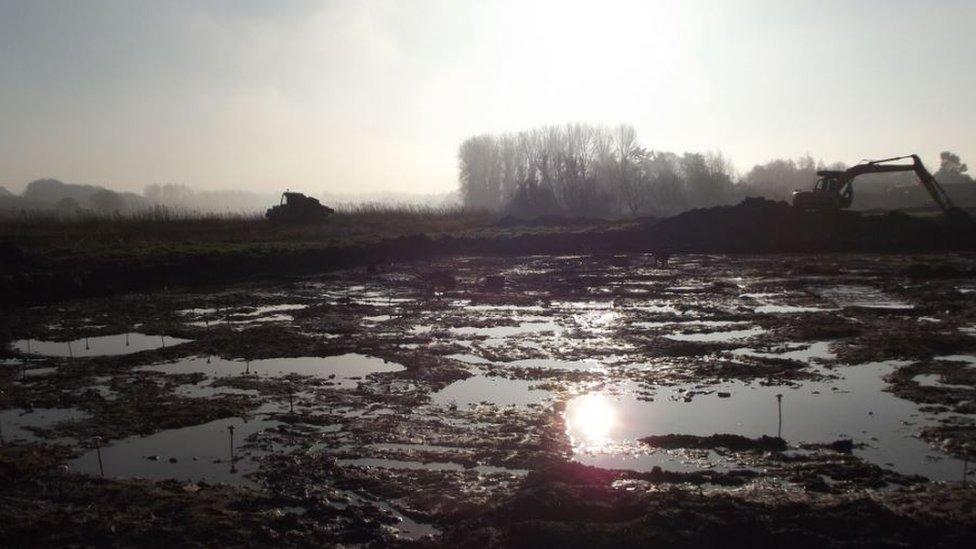
The finds surprised archaeologists because all evidence suggested the field had never been developed
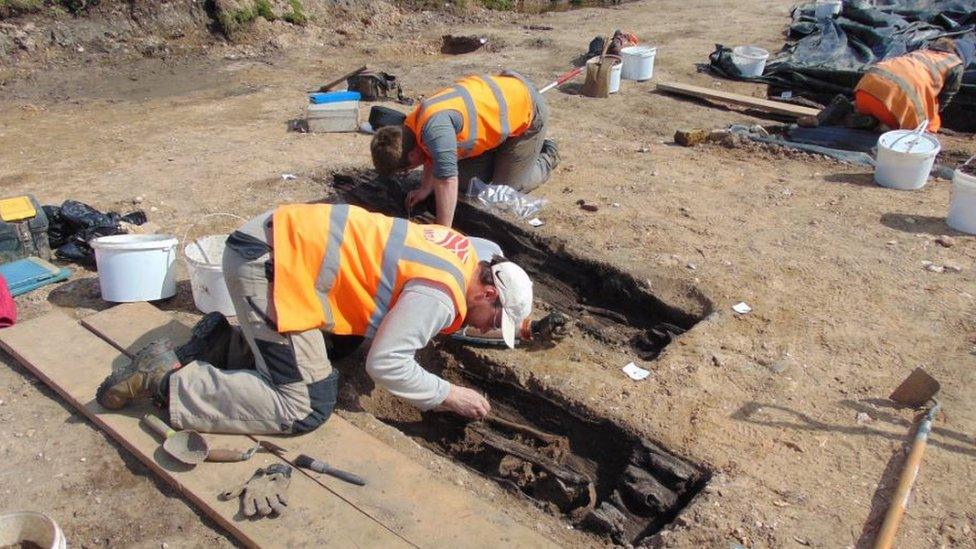
The dug-out coffins were made of oak trees split in two length-ways and hollowed out
Archaeologist Matt Champion made the initial discovery.
Landowner Gary Boyce had asked him to put in trial trenches ahead of the planning application for the lake and flood defence system. These revealed high status Anglo-Saxon pottery and Roman Samian Ware.
He said it was all the more remarkable because prior to the dig "all the evidence suggested the field had never been developed".
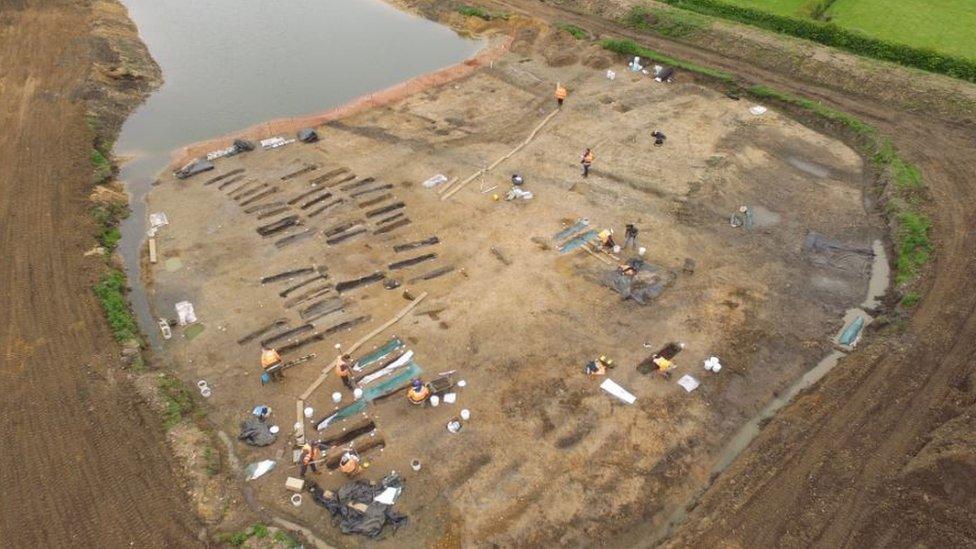
Matt Champion believes they have stumbled upon an Anglo-Saxon "monasteria" - a forerunner of a monastic settlement, which doubled as a civic community
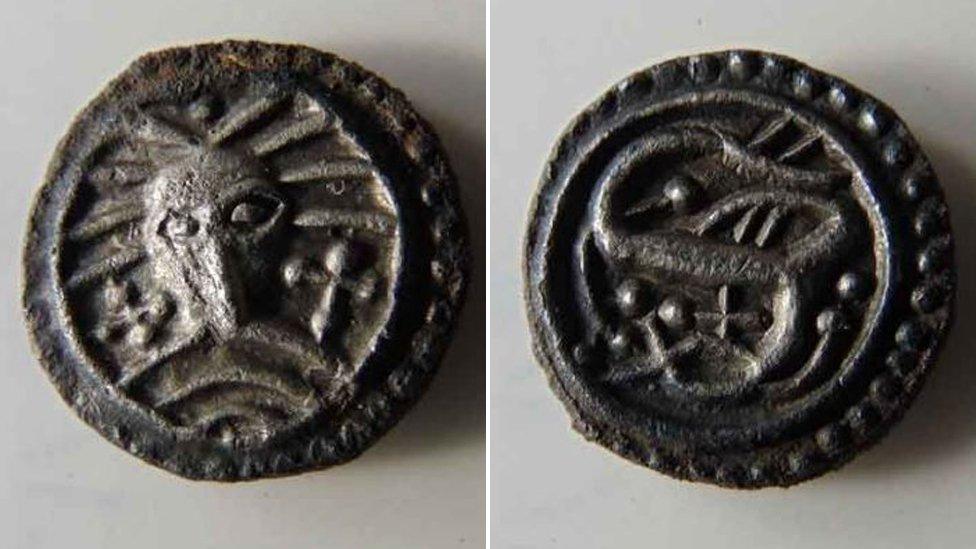
No grave goods were discovered in the dig but the surrounding area was full of artefacts
They decided to carry out a full excavation in January - and within an hour found the first of over 80 human burials. The dig was completed in June but its findings have only just been released to the press.
Historic England said other important finds included six "very rare" plank-lined graves "believed to be the earliest known examples in Britain" and evidence of a timber structure thought to be a church.
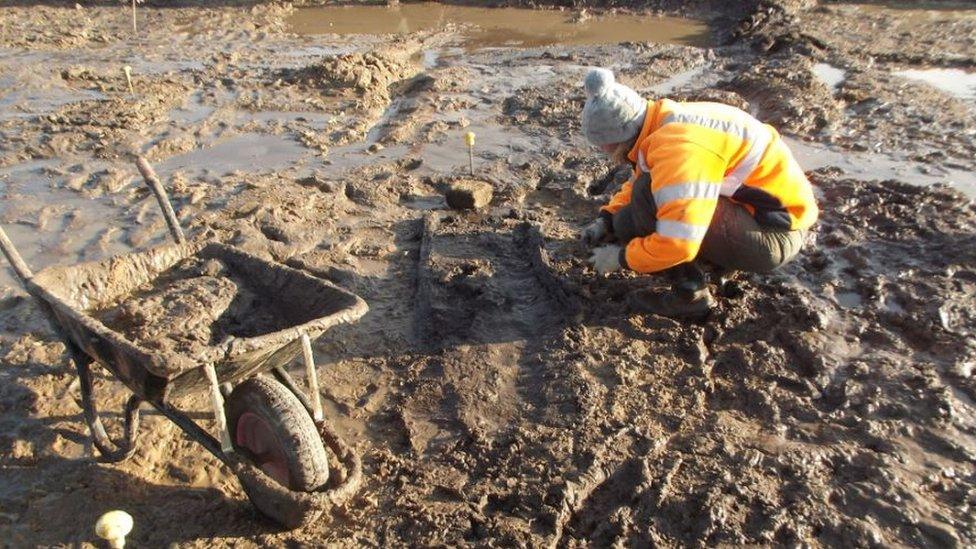
Plank-lined graves were dug into the ground, lined with hewn timber planks and the body placed inside

Norwich Castle Museum curator Tim Pestell said the find would "refine our knowledge of this fascinating period when Christianity and the church were developing"
Historic England believes the burials date from between the 7th and 9th Centuries AD and were "the final resting place for a community of early Christians".
Research is continuing to find out where the bodies came from, how they were related and what their diet and health was like.
Some of the finds will go on display at Norwich Castle Museum.
- Published20 September 2016
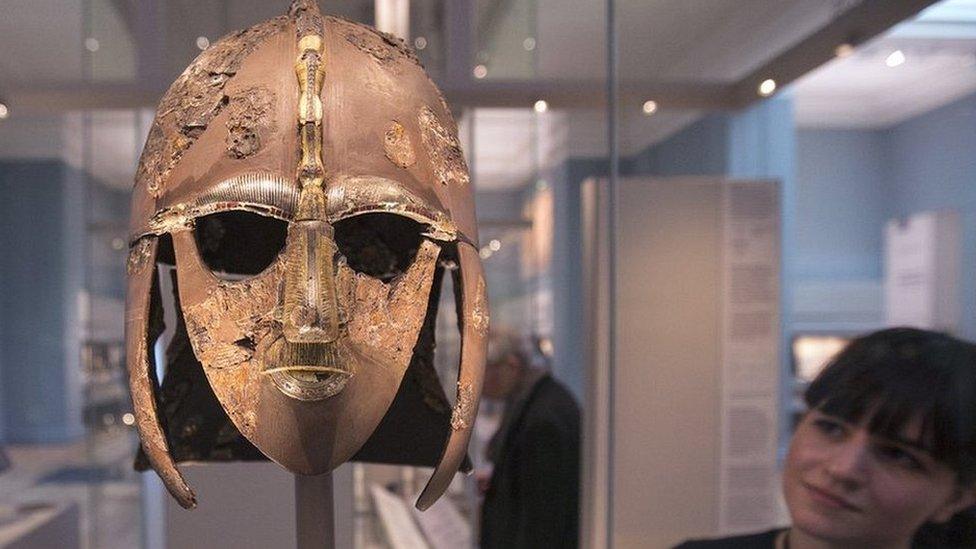
- Published13 February 2016

- Published27 February 2015
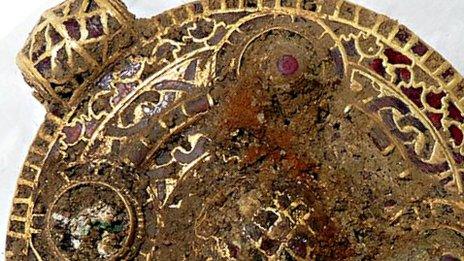
- Published17 November 2014
